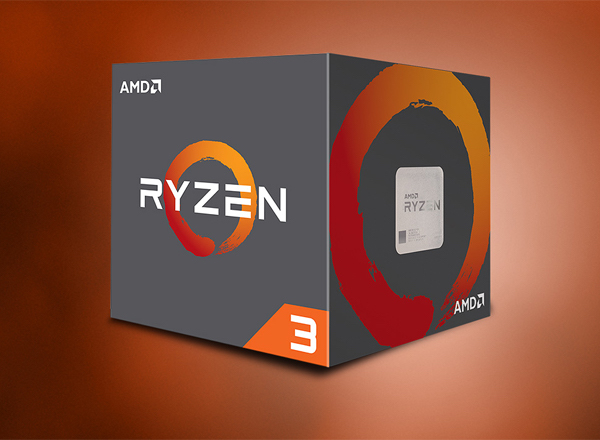AMD Rounds Out Ryzen Family for HPC

AMD’s Ryzen 3 platform rounds out the processor family aimed at high performance computing. Image Courtesy of AMD
Latest News
August 1, 2017
Responding to a market hungry for reasonably-priced, high-performance computing (HPC) solutions, AMD has fleshed out its Ryzen line of top-of-the-line processors with the Ryzen 3 desktop family designed as a budget-friendly package for mainstream users.
The new pair of processors—the AMD Ryzen 3 1300X and AMD Ryzen 3 1200 CPU—come equipped with quad-core unlocked performance making them suitable for gaming and sophisticated computing applications, including 3D modeling, rendering, and simulation. The Ryzen 3 models join AMD’s Ryzen 7 processors designed for demanding power users and the Ryzen 5, which targets so-called serious “prosumers.”
The workhorses of the Ryzen line, best suited for high performance engineering and simulation applications, are the Ryzen 7 processors, launched earlier this year and boasting eight cores, 16 threads, and pricing structures that AMD officials tout for under cutting Intel high-end processors. The Ryzen 5 series, which is positioned as more affordable, launched in April and ranges from four cores and eight threads to up to six cores and 12 threads.
The latest Ryzen 3 processor offerings are quad-core chips that AMD officials say boast impressive multiprocessing advantages, particularly for improving game performance. The new chip platform is also multiplier-unlocked, giving performance-hungry users the freedom to overclock for added horsepower for even more demanding workloads like rendering and compiling. The Ryzen 3 1300X clocks in at 3.5GHz to 3.7GHz while the 1200 performs at clock speeds between 3.1GHz and 3.4GHz. According to benchmarks from Cinebench nT, the Ryzen 3 1300X clocks in at speeds up to 29% faster than comparable competitors.
 AMD’s Ryzen 3 platform rounds out the processor family aimed at high performance computing. Image Courtesy of AMD
AMD’s Ryzen 3 platform rounds out the processor family aimed at high performance computing. Image Courtesy of AMDThe entire Ryzen processor family is based on AMD’s Threadripper platform. In addition to support for up to 16 cores and 32 threads, the chip platform delivers 64 PCIe Gen3 lanes to accommodate large GPU needs for visualization and rendering applications while supporting up to 40MB of combined cache to ensure rapid access to large data sets. Other critical features for high performance computing: Quad channel DDR4 with support for ECC for reliable throughput and new premium liquid cooling technologies, which in this case, are provided by third-party manufacturers.
A key differentiator of the Ryzen line is AMD’s SenseMI technology, a set of machine learning and artificial intelligence-driven features that help the AMD Ryzen processor line customize performance to match the needs of workflow and applications. For example, the technologies employ a grid of smart sensors to monitor CPU temperature, resource usage and power draw, and then adapt consumption for specific workloads, minimizing power use and reducing heat and noise. In addition, the system adjusts processor clock speeds in 25MHz increments to optimize performance without pausing work. Select Ryzen processors can support overclocked CPU speeds while automating cooling solutions to prevent overheating. There is also a neural network that maps how programs utilize the CPU to prepare the fastest processor pathway for that particular application as well as algorithms that predict and pre-load necessary data for fast and responsive computing, officials said.
Finally, every Ryzen 3 processor is VR Ready (Virtual Ready), meaning they meet or exceed the requirements for either the Oculus Rift and HTC Vive head-mounted displays, officials said.
This video provides an overview of the key attributes of AMD’s Ryzen platform.
Subscribe to our FREE magazine, FREE email newsletters or both!
Latest News
About the Author
Beth Stackpole is a contributing editor to Digital Engineering. Send e-mail about this article to [email protected].
Follow DE





